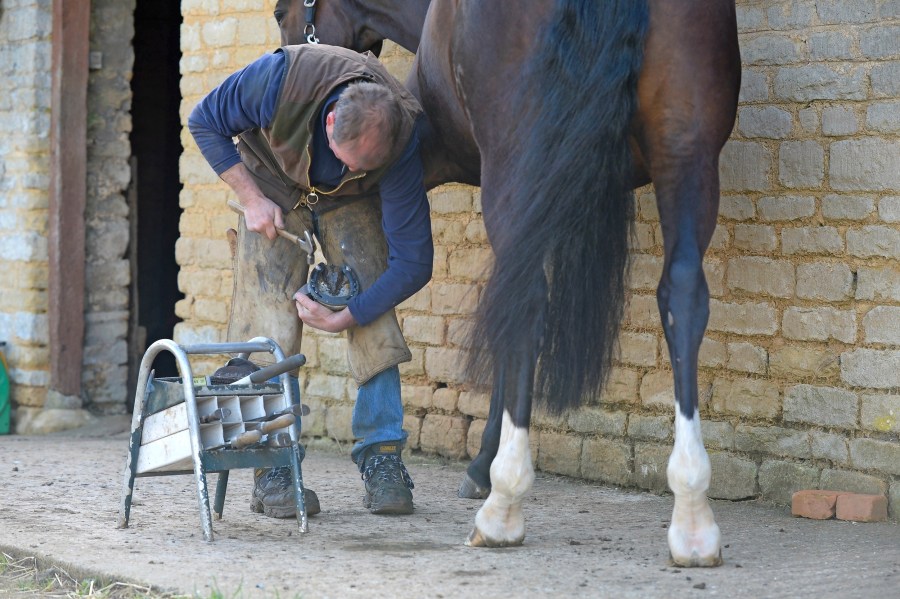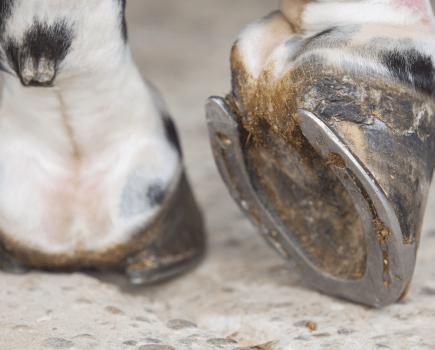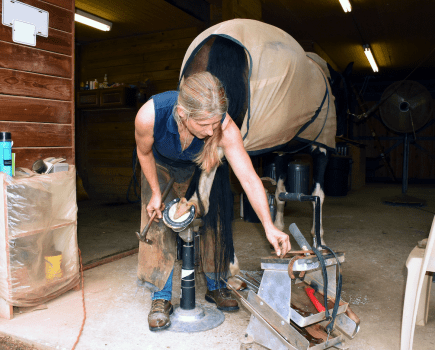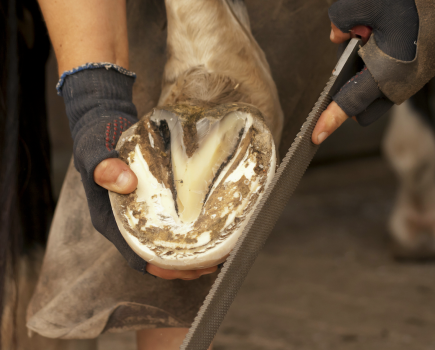The most important thing you can do for your horse’s hooves is have him shod on a regular basis. It’s also important that you know what’s normal for him so keep an eye on his hooves, pick them out daily and if you think something’s not quite right, contact your farrier.
Signs your horse needs a visit from the farrier include;
- The clenches have risen away from the hoof wall
- The hoof has visibly overgrown the shoe at the front or sides
- The shoe’s become worn and thin
- The shoe is twisted or has become loose
In addition to every day general care, here are some tips to help you keep your horse’s hooves in good condition:
1. A good, balanced diet will aid horn growth.
2. Supplements can help give your horse the vitamins and minerals he needs. This can be especially important if your horse has limited turnout and may be lacking the natural, hoof-friendly vitamins found in grass.
3. Ensure you regularly check and wash your horse’s frogs with salt water to help prevent infection, and make the effort to apply hoof dressing a couple
of times a week. This will help to keep the hoof wall in good condition and protect it from the elements.
4. One of the most important things is to maintain a good relationship with your farrier, as they will be able to help you the most if you’re worried about your horse’s hoof health.
Spot the signs of a well-shod foot
Do you know what this should look like? Here are some pointers;
1. When your horse is stood square and on level ground, look at his front feet. Both hooves should look as though they’re the same length, and the coronary bands should be parallel to the floor. Then look at the back feet for the same signs.
2. Pick up each foot and examine the shoe. It should be smooth with no kinks or bumps, and nicely rounded towards the front. Pointed shoes are never a good sign and will impact on your horse’s break-over movement.
3. Look at your horse’s heels on his fore feet. Every horse is different, but as a general rule if his heels are upright, his shoes will need to stick out less at the back as his heels won’t need as much support as a horse with an under-run heel. However, heel support on the back feet tends to be different, as this is where the horse gets his speed and power from. To help with this, your farrier may leave more shoe sticking out the back of the foot to better support the heel, in turn helping him with his movement.
Help him stay sound
You’ll often hear farriers refer to a balanced hoof, and this is critical in order to maintain soundness. In a nutshell, it refers to the way your horse’s hoof strikes the floor (all his hooves must do this with equal impact). If your horse’s footfall is uneven, for example if one heel strikes before the other heels, it will cause uneven stress within the foot and lower limbs. This, in turn, will affect your horse’s gait and limit his mobility.
The signs of a balanced hoof
The pastern and the front of the hoof should run at the same angle to one another. If you look at the hoof side-on there should be a straight line from the fetlock joint down to the bottom of the hoof. The foot should also land on the ground evenly, not one side before the other.
Break-over is the moment your horse’s hoof starts to leave the ground in walk, with his heel rising first before his toe.
If his hooves are unbalanced, he’ll struggle with this movement and may become unsound. This is usually the result of your horse’s toes becoming too long, or the shoe no longer fitting properly. This is why it’s important your horse has regular visits from your farrier to keep his hooves well balanced. Your farrier will shape your horse’s hoof in a way that aids its break-over, usually by rounding or squaring it off.
It’s vital that your horse’s heel is suppoerted correctly by his shoe. If his shoe doesn’t extend to the back of his heel, there’s no support for the bones, tendons and ligaments in the back of his leg and, again, this puts stress on other parts of the limb, limiting his movement.









